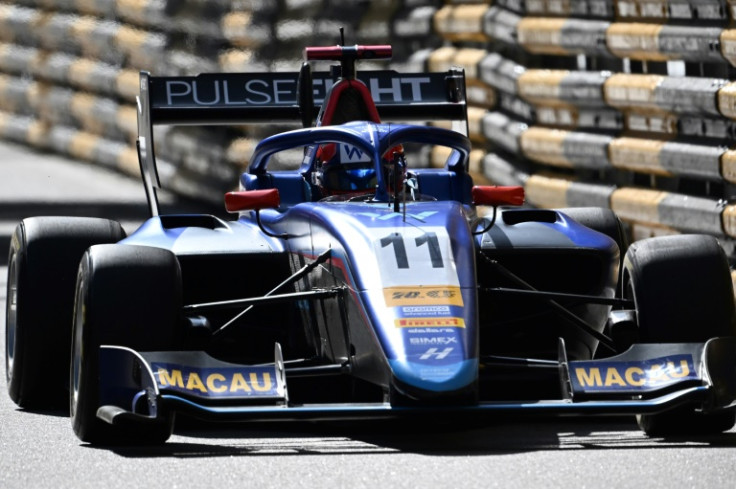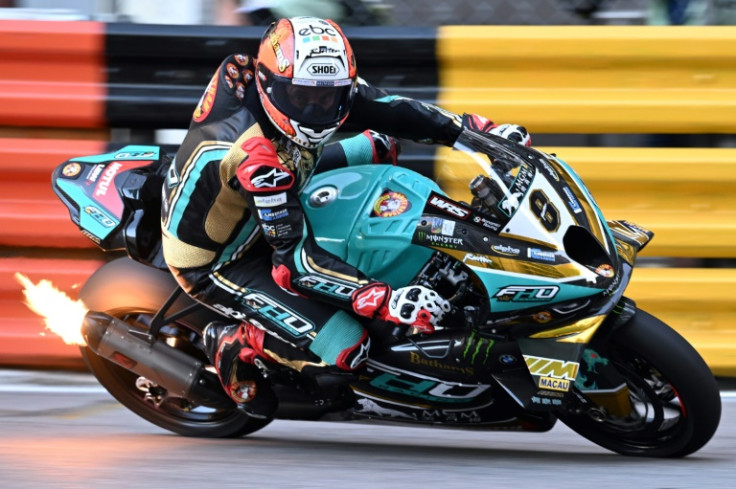Historic Macau Grand Prix Returns To Las Vegas Of The East

Ayrton Senna and Michael Schumacher both conquered the Formula 3 Macau Grand Prix on its treacherous street circuit before becoming legends of motor racing.
This week the historic race meeting celebrates its 70th edition, having helped transform a once-sleepy Portuguese colony into a Far East party town famous for its casinos.
The F1 circus might have landed in Las Vegas, but Asia's petrol heads and high rollers have returned to the Chinese territory of Macau after the grand prix took an enforced break of four years because of the pandemic.
Just an hour's ferry ride west of Hong Kong, Macau has a licence to thrill -- on and off the track -- with its intoxicating mix of high-octane action and neon-lit 24-hour entertainment.
It boasts a resort strip modelled on Las Vegas complete with replica Eiffel Tower, the biggest casino floor in the world and a gambling turnover that regularly eclipses that of Nevada's Sin City.
Unlike F1's newest stop in the United States, it also has a grand prix steeped in history.
It was founded in 1954 when Macau was in the post-war economic doldrums and its main exports were matches and fireworks.
The combination of Formula 3, touring cars and motorbike racing on the challenging -- and sometimes deadly -- 6.2km (3.8 miles) Guia street circuit became a catalyst for Macau's astonishing growth.
It has also been a proving ground for F1 stars of the future.
Future world champions Lewis Hamilton, Sebastian Vettel and Nico Rosberg all showed off their precocious skills on the circuit that twists through Macau's modern skyline and colonial architecture.
"If they're quick round here, they're going to be pretty quick round anywhere," Tim Huxley, a Hong Kong-based businessman and former racing team owner, told AFP in the paddock.
"It's a real mark of talent."
A 19-year-old Hamilton was second in 2004, beaten only by another future Formula One star in Robert Kubica. Rosberg was fourth.
There may have been a glimpse of another starlet on Friday as Luke Browning, a 21-year-old Englishman attached to Williams racing, set the fastest F3 lap on his Macau debut.
"This is the race that a lot of Formula One team principals pay a lot of attention to," added Huxley. "It really does show good potential."
The third week of November in Macau is a throwback to the early days of motorsport.
Teeming crowds seem to be on top of the track, daredevil racers risk all and red flags after crashes are the norm rather than the exception.
The dangers are all too real. There have been 17 fatalities over the years, nine of them coming on two wheels.
The last was six years ago when 31-year-old British motorcyclist Daniel Hegarty was killed instantly in a crash.
A year later, video footage of 17-year-old F3 driver Sophia Floersch went viral after the German's car took off at 170mph (273kph) and flew over cars backwards into the catch fencing at the Lisboa bend in a terrifying incident.
Floersch suffered fractured vertebrae but returned a year later proving that Macau's unique atmosphere and adrenaline rush are addictive.
"There is nowhere else like it in the world," motorcycling great Michael Rutter told AFP outside his FHO Racing BMW Motorrad garage before heading out in final qualifying for the motorcycle grand prix.
Rutter first raced in Macau in 1994, won for the first time in 1998 and took a record ninth win at the circuit in 2019, declared the victor while leading a race that was red-flagged twice and did not finish.
"The track suits my style," Rutter said modestly of his incredible record which spans three decades and also boasts three second-place finishes.
"I'm a tidy rider and don't lean on it too much and I think that helps."
At the age of 51, the Englishman is attempting a record-extending 10th Macau win, on a new BMW 1000cc superbike for a new team.
What keeps him coming back?
"Standing here now and there's cars, bikes, Formula 3 cars and a bit of everything," he said.
"It's just unique."


© Copyright AFP 2024. All rights reserved.











